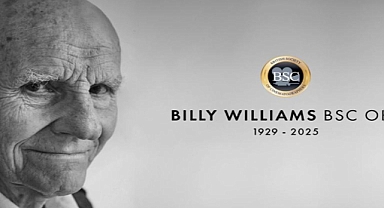What Black Friday’s History Reveals About 2024 Shopping TrendsWhile the event no longer features the same midnight mall crowds or chaotic stampedes of years past, it remains a cornerstone of the shopping season. The rise of e-commerce and changes in consumer behavior—largely influenced by the COVID-19 pandemic—have redefined the tradition.Retailers, eager to draw in shoppers, began rolling out deals weeks before the event, inundating customers with promotional emails and online ads. Despite these changes, an estimated 131.7 million shoppers are expected to partake in Black Friday this year, contributing to the 183.4 million anticipated to shop between Thanksgiving and Cyber Monday, according to the National Retail Federation and Prosper Insights & Analytics.When Is Black Friday in 2024?
This year, Black Friday falls on November 29, the day after Thanksgiving, continuing its place as the unofficial start of the holiday shopping season.The Origins of Black Friday
The term "Black Friday" predates its association with shopping. In 1869, it was used to describe the U.S. gold market crash. However, its link to post-Thanksgiving shopping can be traced to mid-20th century Philadelphia. Crowds flocking downtown before the annual Army-Navy football game and seasonal sales caused chaos for city workers, earning the day its moniker.By the 1980s, retailers began promoting the idea that Black Friday marked the shift from operating “in the red” to turning profits or being “in the black.” While this claim is more marketing than historical truth, the term has since become synonymous with the day’s deep discounts and sales events.How Black Friday Has Evolved
Once characterized by packed stores and midnight openings, Black Friday has undergone a transformation. Online shopping’s convenience has allowed consumers to avoid physical stores altogether. Though in-person shopping has rebounded since the pandemic’s peak, e-commerce’s prominence continues to grow.For example, e-commerce made up just 1.7% of total retail sales in the fourth quarter of 2003. By 2023, it accounted for 17.1%, according to Commerce Department data. This shift is reinforced by plummeting prices for popular items like TVs, which once drew massive crowds to stores. The average price for a TV has dropped 75% since 2014, making these items more accessible without the need for doorbuster deals.Despite this trend, 65% of Black Friday shoppers plan to visit stores this year, underscoring the continued appeal of in-person shopping.Black Friday’s Extended Reach and the Rise of Cyber Monday
Black Friday’s impact now spans weeks, with retailers offering deals long before Thanksgiving. The phenomenon has evolved into "Black Friday Month" or "Black Friday Week," with pre-holiday promotions designed to stagger demand and ease shipping pressures.Post-Thanksgiving events like Small Business Saturday and Cyber Monday keep the momentum going. In 2023, Cyber Monday set a record with $12.4 billion in U.S. online sales, while Black Friday generated $9.8 billion, according to Adobe Analytics.The name “Black Friday” itself has become a marketing tool, leveraging consumer recognition to drive engagement. Retailers strategically connect early sales to the event, emphasizing time-sensitive bargains.The Social Side of Black Friday
Despite its evolving form, Black Friday remains a cultural event, blending social interaction with retail excitement. While its dominance is slightly waning due to extended sales and online options, experts suggest its in-store aspect won’t disappear.“It’s a way to connect with others,” says Boston University professor Jay Zagorsky. “This social aspect ensures Black Friday remains relevant for retailers and shoppers alike.”
This year, Black Friday falls on November 29, the day after Thanksgiving, continuing its place as the unofficial start of the holiday shopping season.The Origins of Black Friday
The term "Black Friday" predates its association with shopping. In 1869, it was used to describe the U.S. gold market crash. However, its link to post-Thanksgiving shopping can be traced to mid-20th century Philadelphia. Crowds flocking downtown before the annual Army-Navy football game and seasonal sales caused chaos for city workers, earning the day its moniker.By the 1980s, retailers began promoting the idea that Black Friday marked the shift from operating “in the red” to turning profits or being “in the black.” While this claim is more marketing than historical truth, the term has since become synonymous with the day’s deep discounts and sales events.How Black Friday Has Evolved
Once characterized by packed stores and midnight openings, Black Friday has undergone a transformation. Online shopping’s convenience has allowed consumers to avoid physical stores altogether. Though in-person shopping has rebounded since the pandemic’s peak, e-commerce’s prominence continues to grow.For example, e-commerce made up just 1.7% of total retail sales in the fourth quarter of 2003. By 2023, it accounted for 17.1%, according to Commerce Department data. This shift is reinforced by plummeting prices for popular items like TVs, which once drew massive crowds to stores. The average price for a TV has dropped 75% since 2014, making these items more accessible without the need for doorbuster deals.Despite this trend, 65% of Black Friday shoppers plan to visit stores this year, underscoring the continued appeal of in-person shopping.Black Friday’s Extended Reach and the Rise of Cyber Monday
Black Friday’s impact now spans weeks, with retailers offering deals long before Thanksgiving. The phenomenon has evolved into "Black Friday Month" or "Black Friday Week," with pre-holiday promotions designed to stagger demand and ease shipping pressures.Post-Thanksgiving events like Small Business Saturday and Cyber Monday keep the momentum going. In 2023, Cyber Monday set a record with $12.4 billion in U.S. online sales, while Black Friday generated $9.8 billion, according to Adobe Analytics.The name “Black Friday” itself has become a marketing tool, leveraging consumer recognition to drive engagement. Retailers strategically connect early sales to the event, emphasizing time-sensitive bargains.The Social Side of Black Friday
Despite its evolving form, Black Friday remains a cultural event, blending social interaction with retail excitement. While its dominance is slightly waning due to extended sales and online options, experts suggest its in-store aspect won’t disappear.“It’s a way to connect with others,” says Boston University professor Jay Zagorsky. “This social aspect ensures Black Friday remains relevant for retailers and shoppers alike.”








